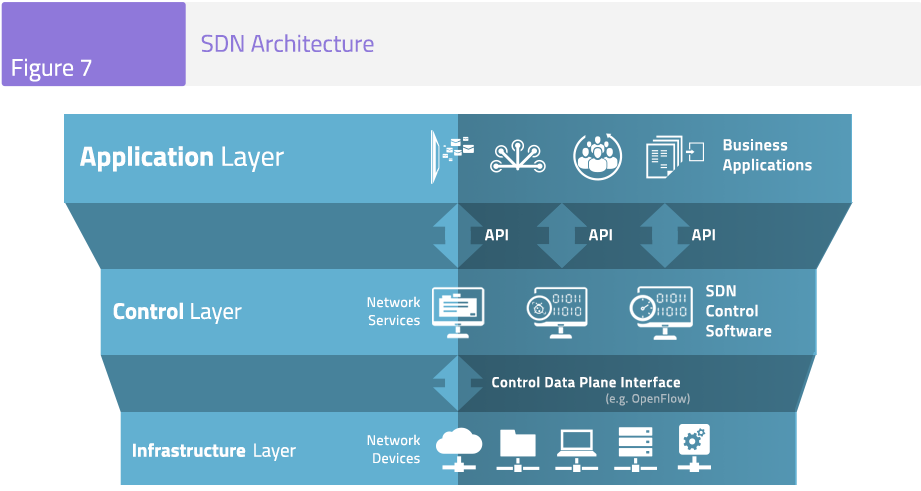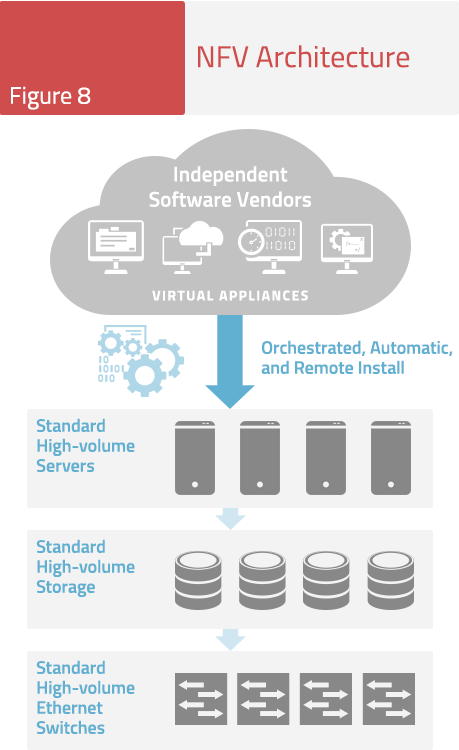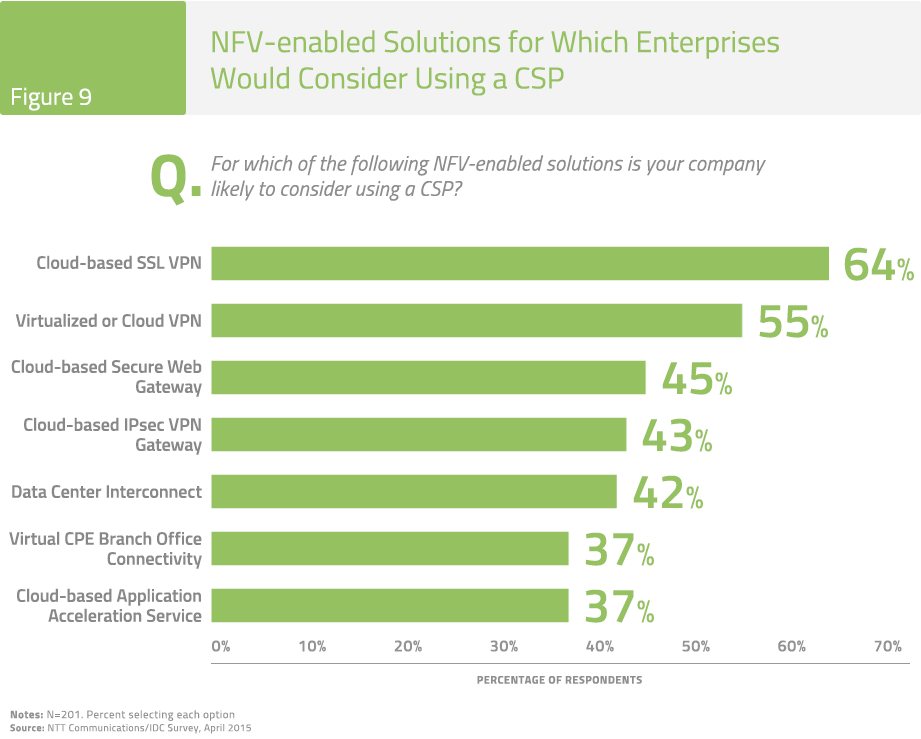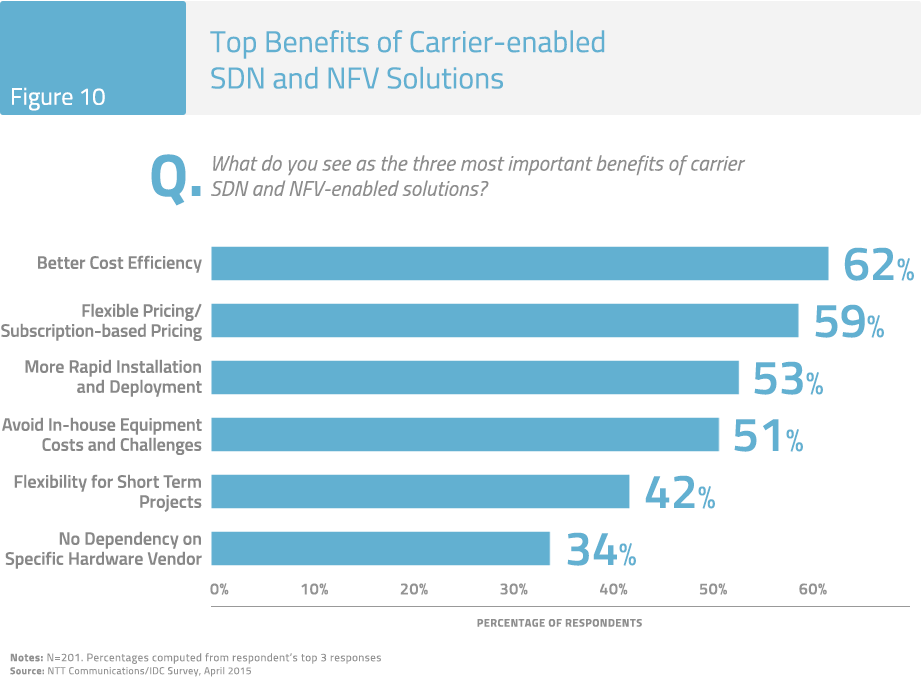NFV Service Enablement; Drivers and Benefits
Today many enterprises are already familiar with virtualization and its inherent benefits.
An IDC survey on Data Center Interconnect of 200 enterprise CIOs indicates that over 70% of these companies are already using more than 50% virtualized servers in their own infrastructure and plan to increase the use of virtualized IT servers and services such as cloud compute and storage during the next 2 years.
This shift among enterprises for virtualized services is forcing CSPs to transform their telecom network infrastructure to become more agile, flexible, and open, and migrate to a programmable environment that will be capable of supporting the global growth and adoption of mobile and cloud services in the business and consumer segments. Many enterprises have realized economic, scaling and efficiency benefits by virtualizing parts of their IT infrastructure to support cloud computing and storage applications. Enterprises are asking CSPs when virtualized network services similar to the virtualized infrastructure and automated IT service provisioning will become available.

Why Should Enterprises Care About NFV and SDN?
Network function virtualization (NFV) is a new industry initiative, sponsored by ETSI and supported by major CSPs, which will transform networks of the future to support more flexible, on demand and lower cost services.
The technology is used for virtualizing network functions into software, which previously were performed by proprietary dedicated network appliances such as firewalls, routers, WAN acceleration and so forth. CSPs can simply deliver many functions such as a firewall, WAN optimization or router on a single dedicated x86 device and instantiate it as a virtual machine on a server within its infrastructure.
Software defined networks (SDN) is another new important industry development that complements NFV and helps CSPs architect a network that can be optimized to support new virtualized services.
SDN abstracts the network architecture by decoupling the network control and forwarding functions enabling the network control to become directly programmable and the underlying infrastructure to be abstracted for applications and network services. By separating the control plane from the data forwarding plane and virtualizing all of the connections, enterprises can remove the hard-wired barriers of networks and quickly change structures to suit their needs.
With NFV, a CSP may be able to get down to only needing a network interface device (NID) or router for demarcation, allowing the rest of the functions to be housed at the CSP’s infrastructure. This ‘cloud-like’ network frees enterprises from the complexity and cost of owning and managing thousands of dedicated network devices from many different vendors.


With the support of SDN, CSPs will be able to provide an automated Web portal service, where enterprises can activate, deactivate, scale up or down the service on-demand to address changing business demands. This reduces the complexity and cost of managing multiple CPE devices for the enterprise CIO.

NFV-enabled services are defined as a new set of managed WAN services that are delivered from a shared intelligent CSP network infrastructure that controls the deployment of network functions on virtual appliances.
NFV-based services facilitate rapid deployment and implementation of new functionality and services. This solves the perennial issue of cumbersome hardware replacement and upgrades at branch locations. Long installation intervals of several weeks or months is a major inhibitor for enterprise flexibility and efficient operations. Consequently, NFV-based services can facilitate a lower TCO (total cost of ownership) of network infrastructure in the long run.
An NTT Com/IDC survey confirms that enterprises are most interested in virtualized or cloud-based VPN services, (a family of hosted VPN services delivered via a dedicated CPE connecting to existing Internet connections including services such as cloud-based IPSec VPN and cloud-based SSL VPNs) (see Figure 9). These are some of the most popular new NFV-enabled WAN services that are emerging as early implementations of the NFV standards.




NFV-enabled SSL VPN services can be ordered, provisioned and connected to the network securely within minutes or hours compared to days or even weeks of installation intervals. Another benefit is that these services can be scaled up or down depending on the use case and on an on-demand basis.
To date, adoption by enterprises of virtualized services has been sporadic because there are very few offerings available today that offer the same reliability and performance as existing WAN services. IDC notes that enterprises prefer that these new virtualized or cloud-based services are offered with some type of SLA that ensures that the network is available and reliable, similar to their WAN experience.
According to the NTT Com sponsored survey, enterprises expect NFV-enabled services to greatly reduce the installation intervals and also provide better cost efficiencies and flexible pricing (see Figure 10), which are also consistent with enterprise requirements when considering cloud services.

Managed NFV-enabled services will offer a wide range of benefits for enterprises including reduced capex, linear scale/pricing and smaller fault domains. In addition, NFV makes applications, along with their associated policies, more portable. The customer self-service Web portal is an essential requirement of a fully developed managed NFV-enabled service offering that empowers the enterprise to scale up and down these services, similar to spinning up and down the cloud computing virtual machine (VM) environment of today.
